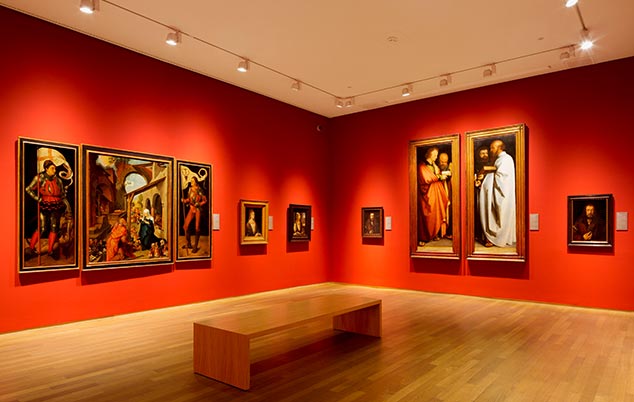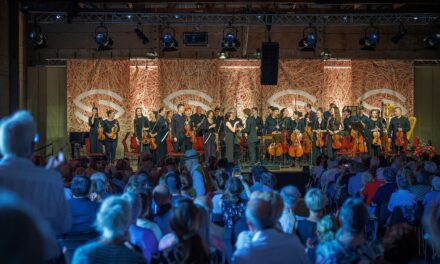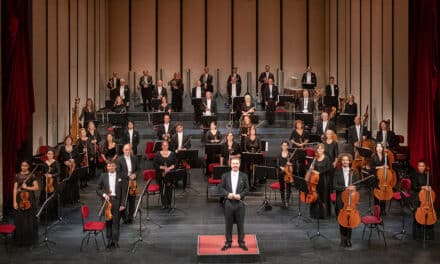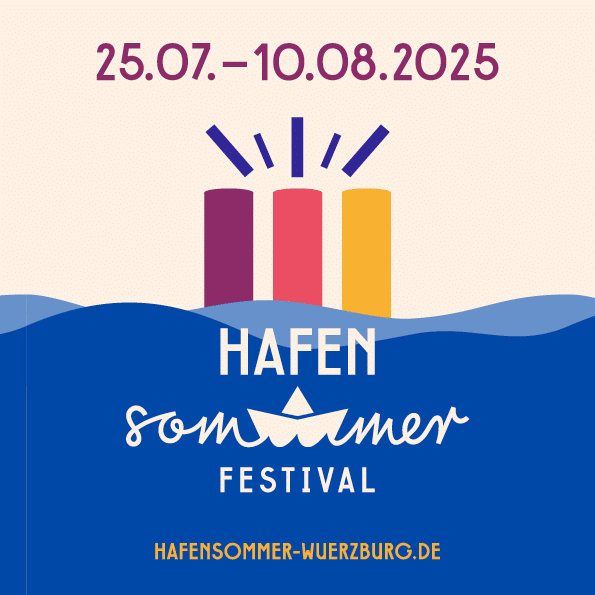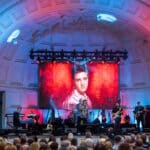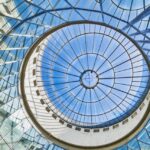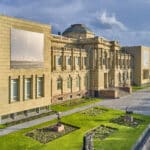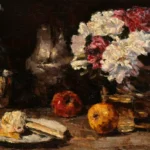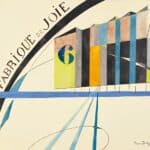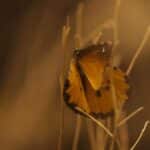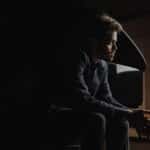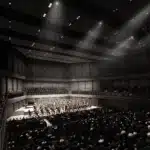Albrecht Dürer (1471-1528), Germany's most famous painter, lived and worked in the mighty half-timbered house from 1509. It is one of the few undestroyed town houses from Nuremberg's heyday and the only 16th century artist's house in northern Europe. Today, the rooms convey an authentic atmosphere and reflect the history of the house as the first German artists' museum since 1828. A special feature is the guided tours led by an actress as Dürer's wife Agnes. Temporary exhibitions showcase the rich holdings of the city's art collections and historical printing techniques are explained in the workshop.
If you want to know more about the artistic techniques of Albrecht Dürer's time, you can follow the creation of many a Dürer work in the "workshop" on the second floor: Here, visitors can learn many interesting facts about how colors were obtained at the time and about Dürer as an engraver and form cutter for woodcuts. Under expert guidance, visitors can also try out Dürer's techniques for themselves. Natural history collection objects and rarities bear witness to Dürer's thirst for research and give an impression of what the artist's personal "cabinet of art and curiosities" might have looked like.
The artist Sofia Fränkl will give you an insight into the creation of a copperplate engraving, from the draft to the finished work. With a sure hand, she creates a Dürer motif line by line on the polished copper plate using a graver. All the steps involved in completing a copperplate engraving are clearly demonstrated by inking and removing the plate. The small works of art can even be purchased afterwards.
The largest room on the second floor, illuminated by mild north-east light, is the painter's workshop.
Here you can follow the most important steps in the creation of a panel painting and learn many interesting facts about the origin and use of the colors used. There are also regular demonstrations of the printing techniques refined by Dürer - copperplate engraving and woodcut.
Opposite the lively workshop, next to a small ink or glue kitchen, is another room where printing takes place. Printing demonstrations on the large letterpress can be seen here several times a day.
Opposite the workshop, next to a second, but more sparsely furnished kitchen - probably the ink or glue kitchen - is a small cabinet. This is where printing takes place!
Printing demonstrations take place several times a day on the large letterpress, which is used to reproduce woodcuts. It was rebuilt in 1971, the year of Dürer's 500th birthday, based on a drawing by Albrecht Dürer.
Visitors can try their hand at printing under expert guidance and even take one of the fresh prints with Dürer motifs home with them.
On the second floor of the Dürer House, the historic kitchen with its large, original hearth offers an insight into the everyday life of wealthy citizens at the beginning of the 16th century.
Opposite are two living rooms that were commissioned to be refurnished in the Dürer style in 1880. They are named after their designer, the Nuremberg art school professor and artist Friedrich Wilhelm Wanderer. These are exquisitely crafted rooms of historicism, which today convey much about the history of the reception of the "cult" figure of Albrecht Dürer.
The adapted permanent exhibition presents Dürer's painterly masterpiece in high-quality copies from the city's collection. In 1627, the imperial city of Nuremberg tried in vain to dissuade the Bavarian Elector Maximilian I from incorporating Albrecht Dürer's famous "Four Apostles" from 1526 into his Munich collection with brilliantly painted copies. As a result, the desire arose in Nuremberg to own at least adequate copies of Dürer's paintings. Over the centuries, a significant collection was amassed, which provides a unique cross-section of Dürer's main painterly works.
The successfully completed first step in the reorientation of the Albrecht Dürer House in terms of content also includes the establishment of the new "Graphic Cabinet" on the 3rd floor in 2010. It is intended to signal to the outside world that the rich holdings of the Graphic Collection of the Museums of the City of Nuremberg have their "shop window" in the very place where Dürer revolutionized the art of printmaking 500 years ago. The removal of a modern partition wall has not only created a spacious room for temporary exhibitions; it has also succeeded in making the historical architecture clearly visible again while at the same time incorporating a modern but restrained exhibition architecture of a high technical standard.

